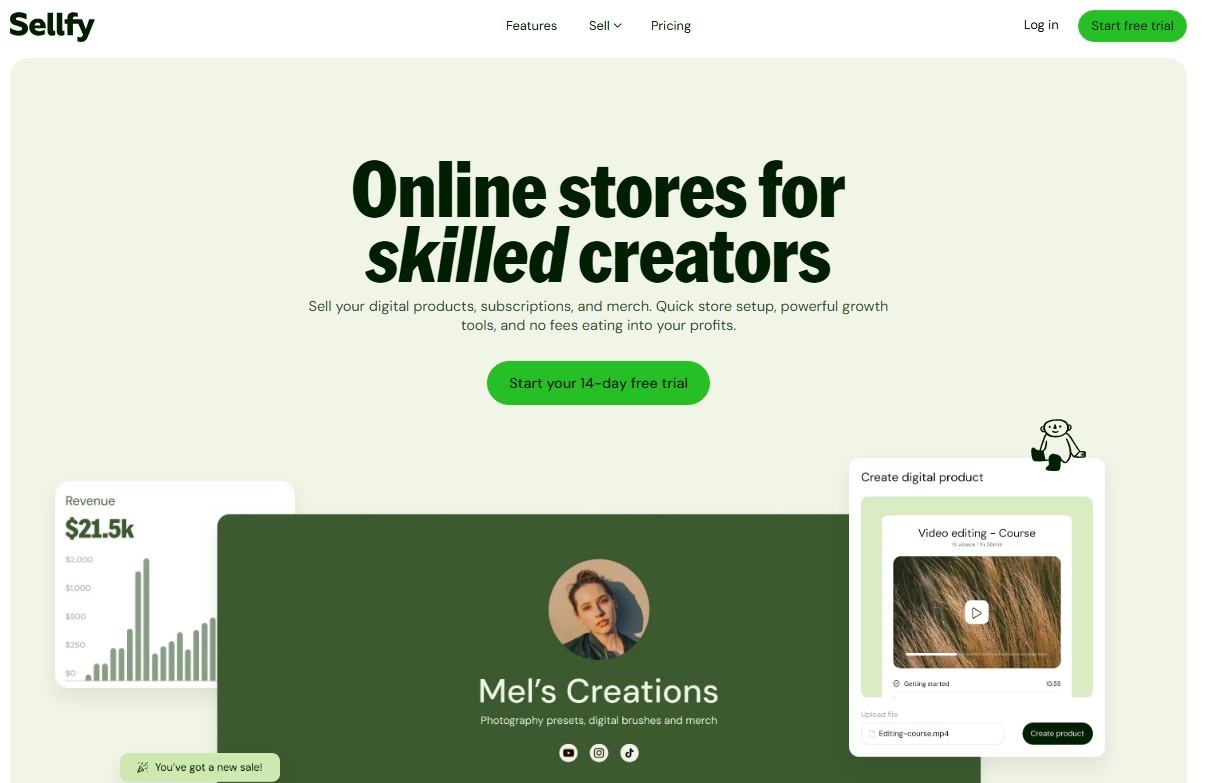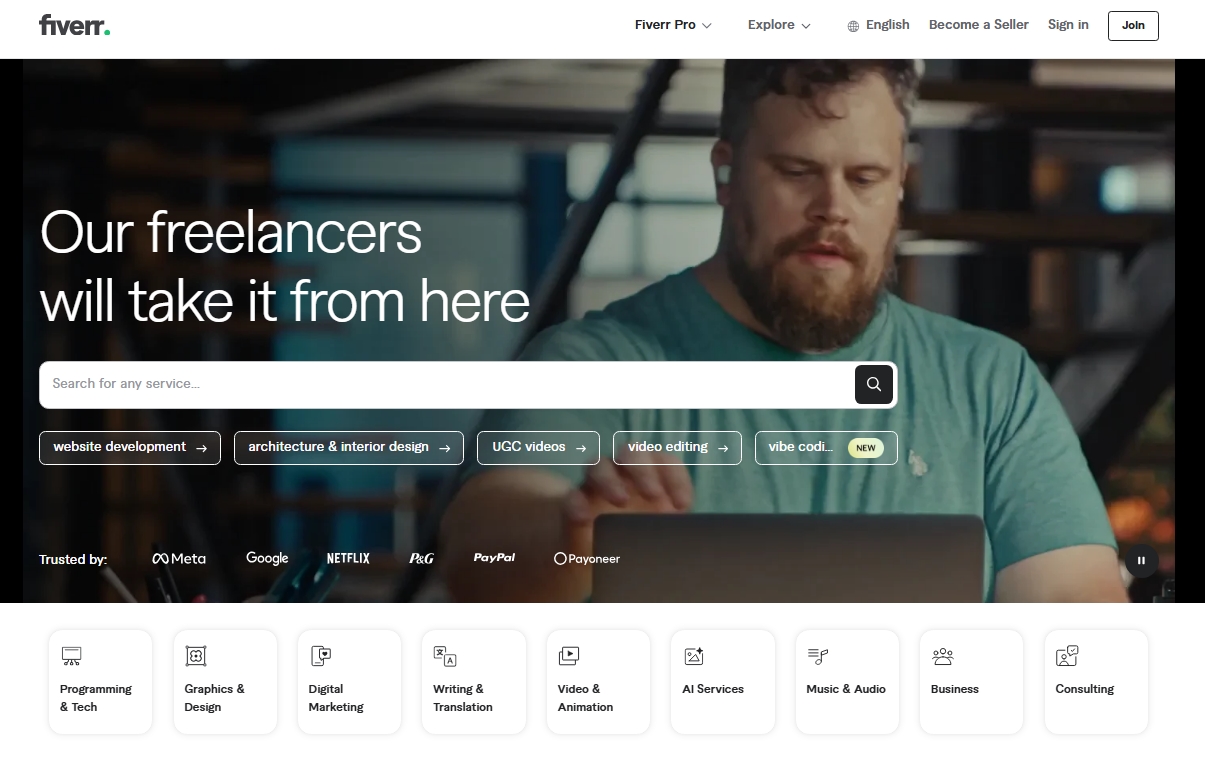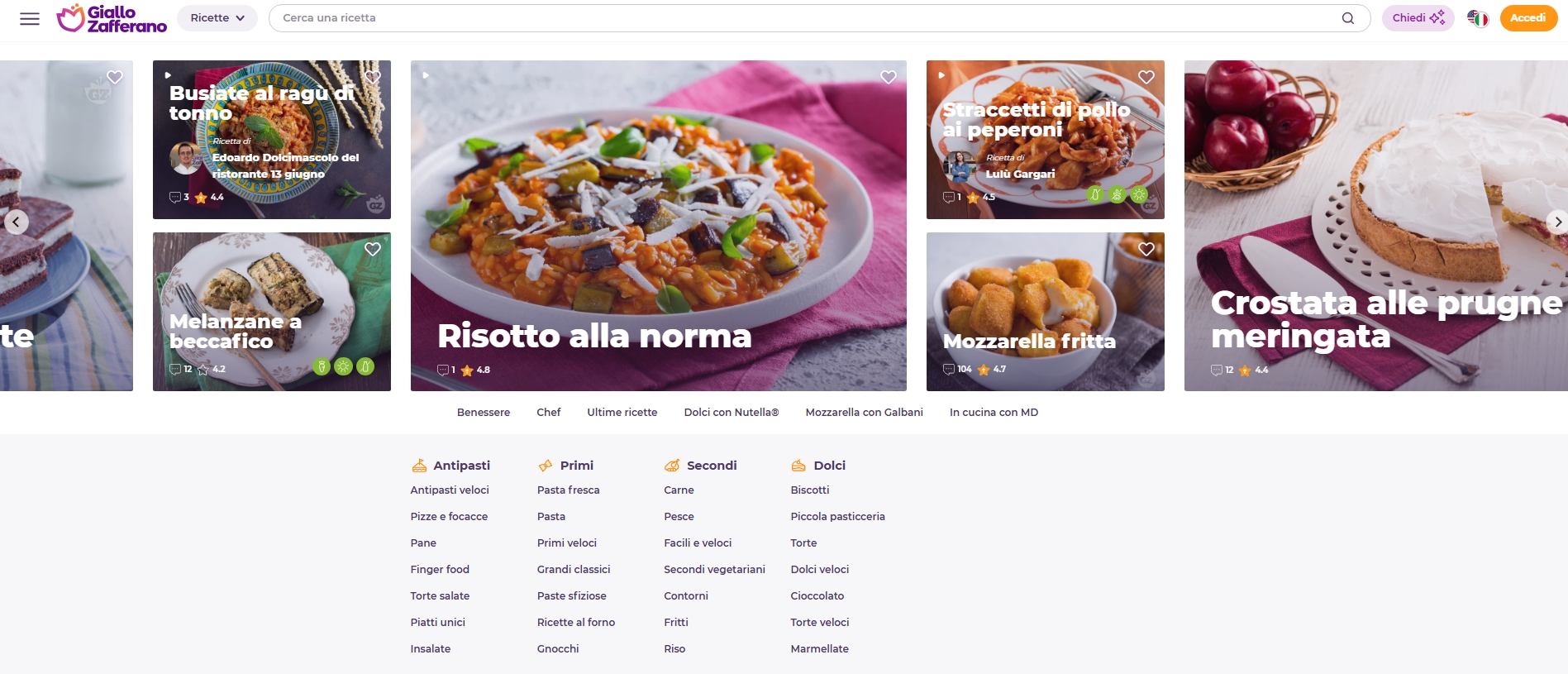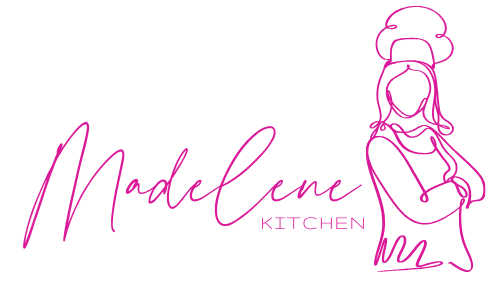Digital food culture has shifted dramatically in recent years as recipes have become a commodity rather than just a family tradition or hobby.
According to data from Statista, Sellfy, and FBP, recipe monetization is on the rise with thousands of creators treating their cooking expertise as a business.
Choosing the right platform plays a critical role in determining long-term income potential.
A recipe might generate only a few dollars on one channel while producing hundreds on another.
For aspiring culinary entrepreneurs, the decision of where to publish or sell recipes can define sustainability and growth.
Self-Owned Platforms: The Most Profitable Long-Term Option
Owning a platform provides the highest level of control over branding, content, and income.
Unlike marketplaces or social platforms, a self-hosted site or a dedicated e-commerce platform allows creators to keep full ownership of their work while designing strategies that maximize revenue.
Although growth takes time and effort, rewards often surpass other options.
Two leading approaches include building a personal website or using Sellfy for direct sales.
Creating Your Own Website or Blog

Building a personal site or blog is the foundation for long-term recipe monetization.
Tools such as WordPress, SiteGround, and Altervista make it accessible for creators at different skill levels.
Control over layout, audience interaction, and marketing enables greater flexibility compared to third-party sites.
Success depends heavily on traffic growth, but once an audience is loyal, revenue potential expands rapidly.
- Ad networks: Google AdSense pays creators based on impressions or clicks, generating steady income with higher traffic.
- Affiliate marketing: Recommending products like cookware, utensils, or ingredients through Amazon or other affiliate programs can produce commissions.
- Digital products: eBooks, exclusive meal plans, and downloadable shopping lists provide recurring passive income.
- Sponsored content: Partnerships with food brands allow creators to create posts or videos that highlight specific products.
Establishing authority in the food niche takes patience, often requiring months of consistent content before significant returns appear.
However, once traction builds, monthly income can easily exceed $400 to $1000.
Blogs are especially powerful for creators aiming to scale, build a personal brand, and retain independence in monetization choices.
Sellfy

Sellfy serves as an e-commerce platform specifically designed for digital products, making it highly effective for recipe creators ready to market packaged material.
By removing the reliance on ad revenue, Sellfy gives creators complete pricing control and immediate payouts.
Stores can be customized with personal branding, and the platform supports multiple content formats.
- Full control over product pricing without external restrictions.
- Instant payout structure that eliminates delays in receiving revenue.
- Ability to sell recipe bundles, videos, and other downloadable material.
- Customizable storefronts that reflect brand identity.
A practical example comes from the Messy Eats blog, where recipe products were successfully priced between $11.99 and $25.
Established creators who already have audiences often generate significant results, with some earning $10,000 or more each month.
Sellfy suits those prepared to treat their recipes as packaged products ready for sale, making it ideal for growth-focused entrepreneurs.
Marketplaces: Good Starting Point, Limited Profits
| Platform/Method | Avg. Earnings | Control Level | Audience Required | Best For |
| Sellfy | $500–$10,000+/mo | High | Medium | Selling digital recipe products |
| Own Blog (AdSense etc.) | $400–$2,000+/mo | High | High | Long-term content marketing |
| Etsy/eBay | $50–$500/mo | Low | None | Beginners with niche recipes |
| TikTok/Instagram | $100–$10,000+/post | Medium | High | Viral short-form content |
| YouTube | $3–$15 CPM | Medium | High | Step-by-step video tutorials |
| Recipe Licensing | $50–$100/recipe | Medium | Low | Passive income from past work |
| GialloZafferano | Cents-per-click | Low | High | Content writers (Italian) |
| Fiverr/We-News | $5–$50+/gig | Low | None | Freelancers |
Marketplaces provide immediate access to buyers without the need for building an audience from scratch.
They offer simplicity and exposure but sacrifice long-term brand building and higher profit margins.
Earnings are usually modest due to fees, competition, and limited customization options.
For many creators, they serve as testing grounds rather than permanent income channels.
Etsy & eBay
Etsy and eBay remain two of the most visited platforms for digital goods, printables, and creative products.
Their large customer bases make them attractive for beginners who want to quickly showcase recipe books, digital files, or printable cooking guides.
Setup is simple, but creators face high competition in saturated categories.
- Pros: Built-in traffic, easy setup, and low initial investment.
- Cons: High competition, platform fees, limited branding control, delayed payouts.
- Best suited for: Beginners with no audience but strong niche recipe products.
Earnings potential remains modest, often limited unless recipes are specialized, such as gluten-free meal plans, cultural cuisines, or themed collections.
Marketplaces can be valuable for early experiments but are rarely the best choice for sustainable income.
Fiverr & We-News

Freelance-oriented platforms like Fiverr and We-News allow creators to monetize through service-based offerings.
Instead of selling pre-packaged recipes, creators offer custom development, meal plans, or recipe articles for paying clients.
Pricing often starts at the lower end, but experienced freelancers with strong portfolios can charge higher fees.
- Customized recipe development tailored to client needs.
- Complete weekly or monthly meal plans.
- Articles and blog posts focused on food and nutrition.
Recipe formatting and photography for professional use.
Rates typically range between $5 and $50 for beginners, but can increase to several hundred dollars with reputation and reviews.
These platforms provide an entry point into freelance recipe development, though they lack the scalability needed for building a long-term business.
Publishing on Recipe Platforms
Dedicated recipe platforms provide a space to share content within established communities.
Earnings are tied to ad revenue or exposure opportunities, which means profits are usually low compared to self-owned solutions.
GialloZafferano

GialloZafferano is one of the most influential recipe platforms in Europe, especially for Italian-speaking audiences.
Submissions earn revenue through ad-driven models such as Google AdSense, but returns depend on the traffic generated by each recipe.
Success often requires careful SEO optimization and consistent posting.
- Pros: Large audience reach, established authority in recipes, visibility for new writers.
- Cons: Low revenue per recipe, language preference for Italian, dependence on traffic.
- Best suited for: Writers seeking exposure, credibility, and traffic rather than high direct income.
While income per recipe is often minimal, contributing regularly can help build credibility and attract opportunities such as freelance work or brand collaborations.
Cookpad
View this post on Instagram
Cookpad operates as a global community where home cooks and food enthusiasts share recipes and interact directly. It emphasizes engagement rather than direct monetization.
Some opportunities for revenue exist through partnerships and exposure to brands, but the main strength lies in building a following.
- Community-driven platform with interactive feedback.
- Opportunity to test recipes in front of engaged users.
- Increased visibility for beginners who lack their own platforms.
Cookpad suits creators at the beginning of their careers who value engagement and community feedback more than revenue.
Profits may be limited, but the ability to connect with real users can be highly valuable for growth.
Social Media Monetization
Social media platforms have transformed recipe sharing into viral entertainment.
Short videos and visually appealing content make it possible to gain massive reach in a short period of time.
Earnings potential depends heavily on creativity, consistency, and audience engagement. These platforms often function best when paired with self-owned platforms or product sales.
TikTok & Instagram
@jose.elcook I Made how much? here is the answer because I appreciate your support! #content #cooking ♬ Gymnopedie No 1 – EmilNilssonMusic
TikTok and Instagram thrive on short-form, visually engaging videos that capture user attention quickly.
Recipe creators who excel at storytelling, editing, and presentation can achieve rapid growth and strong monetization opportunities.
- Brand deals and sponsorships with food companies.
- Creator funds and platform-specific programs.
- Selling digital products, such as recipe eBooks, linked through bio pages.
Case studies like Ashley Renee of Messy Eats demonstrate how viral videos can grow an audience that later transitions into product sales.
Sponsored posts range widely, with smaller creators earning around $50 and larger influencers generating over $10,000 per campaign. These platforms reward consistency, creativity, and the ability to quickly adapt to trends.
Accelerating Growth with Paid Promotion Tools
While organic reach is essential for long-term success, some creators use growth services like https://www.socialwick.com to accelerate visibility on platforms like Instagram and TikTok.
SocialWick offers instant delivery of real followers, likes, views, and other engagement metrics, helping creators quickly boost credibility and social proof.
For food influencers launching new content or products, this kind of early momentum can be valuable when trying to stand out in saturated niches. However, creators should weigh the benefits against risks such as platform algorithm sensitivity and long-term engagement quality.
YouTube
YouTube functions as the premier space for long-form recipe content, tutorials, and instructional cooking videos.
Unlike short-form platforms, it builds long-term engagement and allows creators to grow dedicated subscriber bases.
- Google AdSense revenue based on video CPM.
- Sponsored videos and product placements.
- Memberships and subscriptions through YouTube’s channel programs.
Requirements include reaching 1,000 subscribers and 4,000 watch hours to access monetization. CPM rates often fall between $3 and $15 per thousand views, depending on audience and niche.
Recipe creators who prefer detailed, structured content can leverage YouTube to build authority while generating steady income.
Other Income-Generating Methods
In addition to traditional platforms, recipe creators can monetize through licensing, freelance work, and subscription models. These options provide flexibility and allow for diversification of income streams.

Recipe Licensing
Licensing involves selling rights to existing recipes for commercial use. Brands, magazines, and websites frequently seek recipes for publications or product promotions.
- One-time payments per recipe, often between $50 and $100.
- Minimal effort required once recipes are created.
- Opportunity to generate income from an existing catalog.
This method suits creators with a large archive of tested recipes who want passive income through content resale.
Freelance Recipe Development
Freelance recipe development requires collaboration with brands or companies for custom projects. This type of work often demands photography, detailed instructions, and multiple rounds of testing.
- $100–$250 for simple projects.
- $300–$500 or more for advanced, branded recipes with photography.
Freelance projects provide professional credibility, repeat contracts, and a chance to establish a strong reputation in the food industry.
Newsletters & Memberships
Subscription-based newsletters and membership platforms allow creators to monetize recurring content.
Platforms such as Substack, Patreon, and ConvertKit simplify subscription management and delivery.
- Monthly subscription fees ranging between $5 and $10.
- Ad slots placed in free newsletters for additional income.
- Exclusive access to premium recipes, behind-the-scenes content, or cooking advice.
Even a modest subscriber base of 50–100 can generate $300 or more monthly.
Newsletters suit creators with niche audiences who prefer closer engagement and exclusive offerings.
Summary
Selling recipes online has become a legitimate source of income for thousands of food creators.
Success depends heavily on platform choice, with self-owned blogs and e-commerce platforms like Sellfy offering the strongest long-term profitability.
Marketplaces and community-driven platforms are valuable for beginners, but earnings remain modest. Social media provides unmatched reach, but consistency and creativity are essential.
For sustained results, combining multiple channels and making your meals look like they’re straight out of a restaurant, while focusing on building a loyal audience is the most effective approach.

